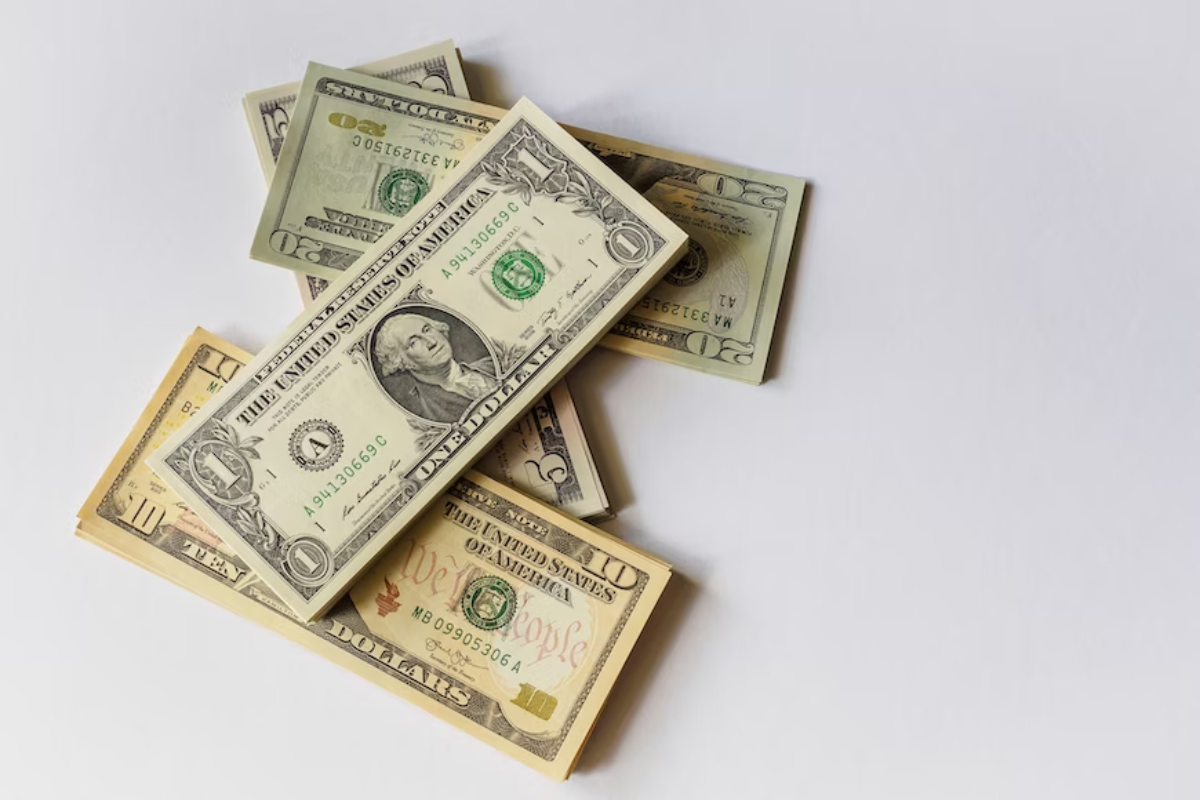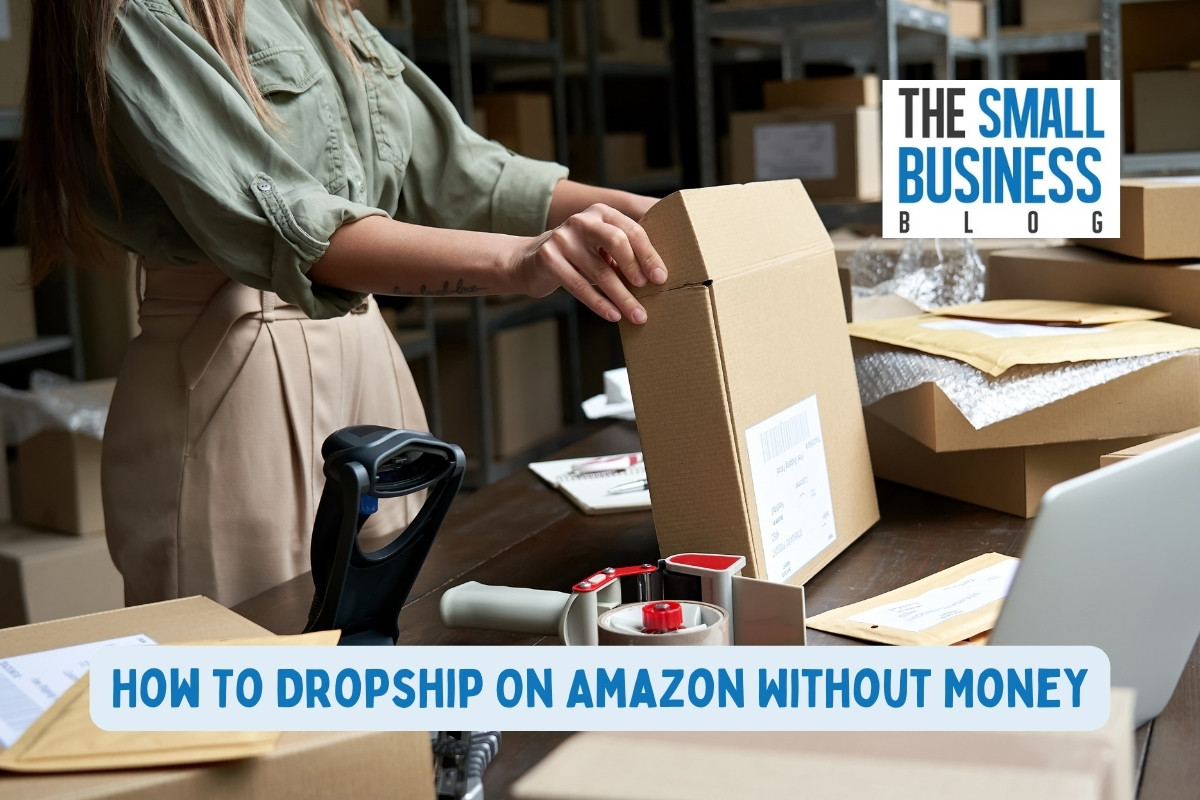Are you interested in starting a dropshipping business on Amazon, but don’t have the funds to invest upfront?
Don’t worry, it’s possible to get started without spending a lot of money but how to dropship on Amazon without money?
In this article, we’ll show you how to dropship on Amazon without money.
First, you’ll need to create an individual Amazon seller account.
This is a free account that allows you to sell products on Amazon.
Once you have your account set up, you can start looking for a product supplier.
Look for suppliers that don’t require a resale or sales tax certificate, as these can be expensive to obtain.
Next, you’ll need to list your products on Amazon.
You can list up to 40 products for $1 per listing.
Once your products are listed, you can start promoting them to potential customers.
When a customer places an order, you’ll forward the order to your supplier, who will handle the shipping and handling.
You’ll only pay for the product once you receive payment from the customer.
Post Contents
- 1 Understanding Dropshipping
- 2 Pros and Cons of Dropshipping on Amazon
- 3 How to Dropship on Amazon Without Money
- 4 Choosing the Right Products and Suppliers
- 5 Managing Inventory and Orders
- 6 Understanding Amazon Fees and Profit Margins
- 7 Marketing Your Dropshipping Business
- 8 Customer Service in Dropshipping
- 9 Rules and Policies of Amazon Dropshipping
- 10 Key Takeaways
Understanding Dropshipping

If you’re interested in starting an ecommerce business without investing a lot of money upfront, dropshipping might be the ideal business model for you.
Dropshipping is a way of selling products where you don’t have to keep inventory or handle shipping yourself.
Instead, you work with a supplier who ships the products directly to your customers.
Here’s how dropshipping works:
- You find a supplier who is willing to dropship their products.
- You list the supplier’s products on your Amazon store at a markup price.
- When a customer buys a product from your Amazon store, you purchase the product from the supplier at a lower price.
- The supplier ships the product directly to the customer.
One of the biggest advantages of dropshipping is that you don’t have to invest a lot of money upfront in buying inventory.
You only need to pay for the product when a customer buys it from you.
This means that you can start your ecommerce business with very little money.
However, dropshipping also has some drawbacks.
Since you’re not handling shipping yourself, you have less control over the delivery process.
If the supplier doesn’t ship the product on time or the product is damaged during shipping, you’ll have to deal with the customer complaints and returns.
It’s also important to note that dropshipping is a competitive business model.
Since it’s easy to start a dropshipping business, there are many other sellers who are offering the same products as you.
To succeed in dropshipping, you need to find a niche market and offer unique products or services that differentiate you from your competitors.
Pros and Cons of Dropshipping on Amazon
If you’re looking to start a business on Amazon without investing any money, dropshipping might be a good option for you.
However, before you dive in, it’s important to be aware of the pros and cons of dropshipping on Amazon.
Pros of Dropshipping on Amazon
- Low startup costs: With dropshipping, you don’t need to buy inventory upfront, which means you can start your business with little to no money.
- Easy to get started: Amazon has a user-friendly interface that makes it easy to list your products and start selling.
- Wide customer base: Amazon has millions of customers worldwide, which means you have a large potential customer base.
- No need to handle shipping: With dropshipping, your supplier takes care of shipping the products to your customers, which saves you time and money.
- Ability to offer a wide range of products: Since you don’t need to buy inventory upfront, you can offer a wide range of products without worrying about storage space.
Cons of Dropshipping on Amazon
- Low profit margins: Since you’re not buying inventory upfront, your profit margins will be lower compared to traditional retail businesses.
- Limited control over inventory: With dropshipping, you’re dependent on your supplier to have the products in stock and to ship them on time. This means you have limited control over inventory management.
- Amazon fees: Amazon charges fees for listing products and for each sale, which can eat into your profits.
- Competition: Since dropshipping is a popular business model, there is a lot of competition on Amazon. This means you need to find a way to differentiate yourself from other sellers.
How to Dropship on Amazon Without Money

If you’re looking to start dropshipping on Amazon but don’t have any money to invest, don’t worry.
It’s still possible to get started without breaking the bank.
Here’s how:
Step 1: Create an Individual Amazon Seller Account
To start dropshipping on Amazon, you’ll need to create a seller account.
The good news is that Amazon offers two types of seller accounts: individual and professional.
The individual seller account is free to set up, and you only pay a fee when you make a sale.
This is the perfect option if you’re just starting out and don’t have any money to invest.
Step 2: Find a Product Supplier
Once you have your seller account set up, you’ll need to find a product supplier.
Look for a supplier that doesn’t require a resale or sales tax certificate from you.
This will save you money and make it easier to get started.
Step 3: List Your Products
With your supplier in place, it’s time to list your products on Amazon.
You can list up to 40 products with your individual seller account, and you’ll need to pay $1 per listing.
This is a small investment that can pay off big in the long run.
Step 4: Set Up Payment Processing and Shipping Information
To start making sales, you’ll need to set up payment processing and shipping information.
Amazon makes this easy for you by providing tools to help you manage your orders and shipments.
With these four steps, you can start dropshipping on Amazon without any money.
It may take some time and effort to get started, but with persistence, you can build a successful dropshipping business on Amazon.
Choosing the Right Products and Suppliers

When dropshipping on Amazon, choosing the right products and suppliers is crucial to your success.
Here are some tips to help you find the right niche and identify reliable suppliers.
Finding the Right Niche
To find the right niche, start by researching popular products on Amazon.
Look for products that have a high demand and low competition.
You can use tools like Jungle Scout or Helium 10 to help you find profitable niches.
Once you have identified a niche, research the competition.
Look for ways to differentiate yourself from other sellers.
You can offer better prices, better customer service, or unique product variations.
Identifying Reliable Suppliers
When it comes to finding a dropship supplier, you have several options.
You can work with wholesalers, manufacturers, or dropship suppliers.
Wholesalers and manufacturers typically offer lower prices, but they require you to purchase products in bulk.
This can be a problem if you don’t have a lot of money to invest upfront.
Dropship suppliers, on the other hand, allow you to sell products without purchasing them upfront.
They handle the shipping and fulfillment, so you don’t have to worry about inventory management.
However, dropship suppliers may charge higher prices than wholesalers or manufacturers.
To find a reliable supplier, look for suppliers with a good reputation.
Check their reviews and ratings on Amazon and other marketplaces.
You can also ask for samples to test the quality of their products.
Managing Inventory and Orders
When it comes to dropshipping on Amazon without money, managing inventory and orders is crucial.
You need to ensure that you have enough inventory to fulfill customer orders, and that you can efficiently and effectively manage those orders once they start coming in.
Inventory Control
To manage your inventory effectively, you need to keep track of what you have in stock and what you need to reorder.
This is where inventory control comes in.
You can use Amazon’s inventory management tools to track your inventory levels and set up automatic reorder points.
This will help you avoid running out of stock and ensure that you can fulfill customer orders in a timely manner.
Order Fulfillment
Once you receive a customer order, you need to fulfill it as quickly and accurately as possible.
This involves picking, packing, and shipping the order to the customer.
You can use Amazon’s order fulfillment services to handle this process for you.
Amazon will store your inventory in their warehouses, pick and pack the order, and ship it to the customer on your behalf.
This can save you time and money, and ensure that your customers receive their orders quickly.
Delivery
Delivery is an important part of the order fulfillment process.
You need to ensure that your customers receive their orders on time and in good condition.
You can use Amazon’s delivery services to handle this for you.
Amazon offers a range of delivery options, including same-day delivery, two-day delivery, and standard delivery.
You can choose the option that best suits your needs and budget.
Understanding Amazon Fees and Profit Margins

When you start dropshipping on Amazon, it’s important to understand the fees associated with selling on the platform.
Knowing these fees will help you calculate your profit margins accurately and avoid any surprises.
Amazon Fees
Amazon charges two main types of fees: referral fees and subscription fees.
- Referral fees: These fees are a percentage of the total sale price of the item, and they vary depending on the category of the product you’re selling. For example, referral fees for electronics are generally higher than for books. You can check the referral fee schedule on Amazon’s website to see the exact percentage for each category.
- Subscription fees: If you plan to sell more than 40 items per month, you’ll need to sign up for a professional seller account, which costs $39.99 per month. This fee allows you to access additional selling tools and features, such as the ability to create your own product listings.
In addition to these fees, you may also need to pay for other costs, such as shipping and handling fees, storage fees, and advertising fees.
Profit Margins
To calculate your profit margins, you need to subtract all the costs associated with selling on Amazon from your total revenue.
This includes the cost of the product, Amazon fees, and any other expenses.
For example, if you sell a product for $50 and the cost of the product is $20, your profit before Amazon fees would be $30.
However, if the referral fee for that category is 15%, you would need to subtract $7.50 from your profit, leaving you with $22.50.
It’s important to keep in mind that profit margins can vary widely depending on the product you’re selling and the competition in that category.
You may need to adjust your prices or find ways to reduce your costs to maintain a healthy profit margin.
By understanding the fees and profit margins associated with selling on Amazon, you can make informed decisions about your pricing and strategy to maximize your profits.
Marketing Your Dropshipping Business
When it comes to running a successful dropshipping business, marketing is key.
Without proper marketing, your business may struggle to gain traction and attract customers.
Leveraging Social Media
Social media can be a powerful tool for promoting your dropshipping business and reaching potential customers.
Platforms like Facebook and Instagram allow you to create business pages and post content that showcases your products and brand.
To get started with social media marketing, create a business account on Facebook and/or Instagram.
From there, you can start posting photos and videos of your products, as well as engaging with your followers through comments and direct messages.
To make the most of your social media presence, consider running paid advertising campaigns.
These can help you reach a wider audience and drive more traffic to your website.
Using Promotions to Boost Sales
Promotions and discounts can be a great way to attract new customers and boost sales.
Consider offering a discount code for first-time customers, or running a limited-time sale on select products.
To make the most of your promotions, be sure to promote them on your website and social media channels.
You can also consider partnering with influencers or bloggers in your niche to help spread the word about your sale.
When running promotions, be sure to set clear start and end dates, and communicate the details clearly to your customers.
This will help create a sense of urgency and encourage customers to take advantage of the offer while they can.
Customer Service in Dropshipping

When you are dropshipping on Amazon, providing excellent customer service is crucial to your success.
As a dropshipper, you are responsible for the customer experience, even though you are not handling the product directly.
Here are some tips to ensure that your customers are satisfied:
- Communication is key: Keep your customers informed about the status of their order. Let them know when it has shipped and provide tracking information if possible. Respond promptly to any questions or concerns they may have.
- Be proactive: Anticipate any potential issues and address them before they become a problem. For example, if a product is out of stock, let the customer know immediately and offer alternatives or a refund.
- Handle returns and refunds with care: Make the return process as easy as possible for the customer. Provide clear instructions on how to return the item and issue refunds promptly.
- Encourage customer reviews: Positive reviews can help boost your sales on Amazon. Encourage your customers to leave a review by following up with them after their purchase and providing a link to the review page.
Remember, your customers are the lifeblood of your business.
By providing excellent customer service, you can build a loyal customer base and increase your sales on Amazon.
Rules and Policies of Amazon Dropshipping
If you are looking to start dropshipping on Amazon without any money, it is important to understand the rules and policies set by Amazon to avoid any suspension or loss of selling ability on the platform.
Here are some of the key rules and policies you should keep in mind:
- Be the seller on record of your products: As an Amazon dropshipper, you must be the seller on record for all your products. This means that you must have legal ownership of the products you are selling and be responsible for their quality and condition.
- Identify yourself as the seller: You must identify yourself as the seller on all packing slips, invoices, and other information included or provided in connection with your products. This helps Amazon and your customers to know who is responsible for the product and to contact you if there are any issues.
- Do not purchase products from another retailer on Amazon: Amazon’s dropshipping policy prohibits you from purchasing products from another retailer on Amazon and then having them shipped directly to your customer. This is known as “retail arbitrage” and is not allowed on the platform.
- Do not use Amazon Prime to fulfill orders: You cannot use Amazon Prime to fulfill orders for your customers. This is because Prime is a service offered by Amazon to its customers, and it is not intended for use by third-party sellers.
- Do not misrepresent your products: You must accurately represent your products and provide clear and complete descriptions of their features, specifications, and condition. Misrepresenting your products can lead to negative reviews and a loss of credibility with your customers.
By following these rules and policies, you can ensure that you are dropshipping on Amazon in a responsible and ethical manner.
Amazon is focused on providing a positive customer experience, and as a seller on the platform, you play an important role in helping to achieve this goal.
Key Takeaways
In summary, here are some key takeaways to keep in mind when dropshipping on Amazon without money:
- Get an individual Amazon seller account: This is the first step to start dropshipping on Amazon. It’s free and easy to set up. However, keep in mind that you’ll need to pay a referral fee for each item you sell on Amazon.
- Find a product supplier that doesn’t require a resale or sales tax certificate: Look for a supplier that allows you to buy products at a low cost without requiring any certificates. This will help you save money and start your business without investing a lot of capital.
- Choose a profitable niche: Identify lucrative niches that have high demand and low competition. This will help you increase your sales and profits.
- Minimize your costs: Use a credit card with a rewards program to earn cashback or points for each purchase you make. Also, use free tools and resources to market your products and grow your business.
- Provide excellent customer service: Make sure to respond to customer inquiries promptly and provide high-quality products and services. This will help you build a good reputation and attract more customers.
Dropshipping on Amazon without money requires hard work, dedication, and patience.
However, if you follow these tips and stay focused on your goals, you can build a successful business and achieve financial freedom.






























